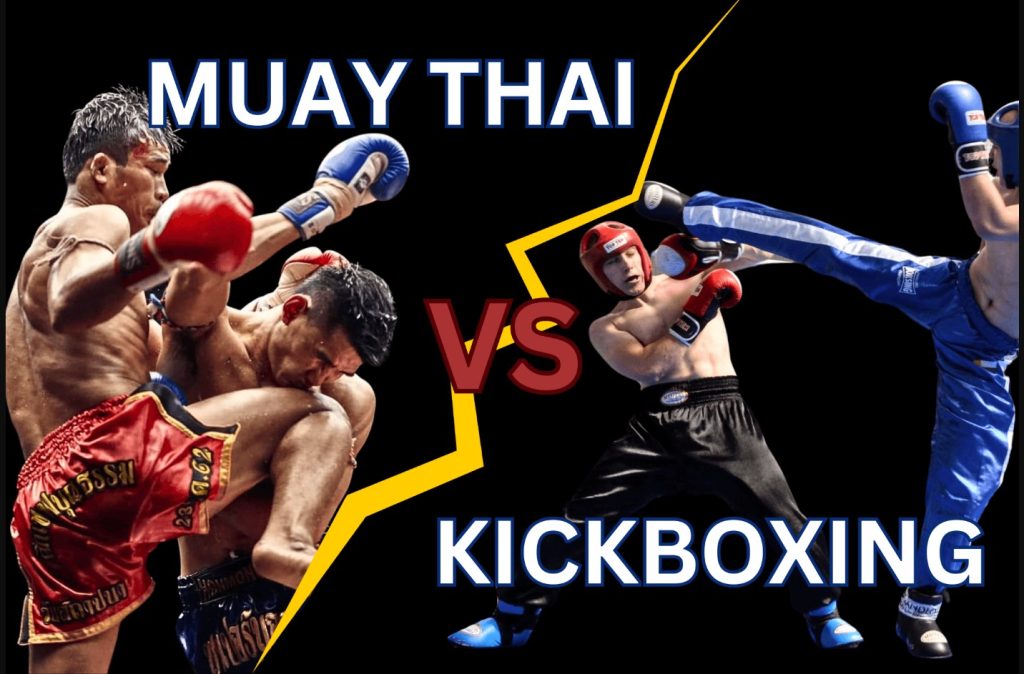Muay Thai or Boxing: Combat sports have long captivated the world with their mix of strategy, athleticism, and raw power. Among the most popular striking arts are Muay Thai and Boxing—two disciplines that, while similar in some aspects, diverge in techniques, training, and application. Deciding which is “better” depends on one’s goals, interests, and personal context. This article explores the major aspects of both sports, comparing them across several key areas.
Table of Contents
1. Origins and History
| Aspect | Muay Thai | Boxing |
|---|---|---|
| Origin Country | Thailand | Ancient Greece / Modern England |
| Historical Use | Battlefield combat, self-defense | Sport and entertainment |
| Development Period | Over 500 years | Codified under Queensberry Rules (1867) |
Muay Thai, known as “The Art of Eight Limbs,” has been practiced in Thailand for centuries, originally as a military discipline. Boxing, with roots in ancient Olympic competition, evolved into a modern sport through formalized rules and global adoption.
2. Techniques and Striking Tools
| Technique Category | Muay Thai | Boxing |
|---|---|---|
| Primary Weapons | Fists, elbows, knees, shins | Fists |
| Clinch Fighting | Yes, heavily used | Limited, often broken by referee |
| Kicks | Yes (low, middle, head) | No |
| Elbows & Knees | Integral part | Not allowed |
| Defensive Movement | Basic head movement, blocking | Slipping, bobbing, weaving, footwork |
Muay Thai allows for a wide array of strikes. Fighters use punches, kicks, elbows, and knees, making it more versatile for self-defense or mixed martial arts. Boxing, however, focuses on mastering punches and head movement, offering deeper specialization in that area.
3. Training Regimens
| Component | Muay Thai Training | Boxing Training |
|---|---|---|
| Typical Duration | 2-4 hours/day | 2-4 hours/day |
| Conditioning Focus | Shin conditioning, endurance | Cardiovascular, upper body strength |
| Technique Drills | Pads, clinch, bag, sparring | Mitt work, footwork, bag, sparring |
| Running and Cardio | Daily long-distance + sprints | Jump rope, roadwork |
Muay Thai emphasizes full-body conditioning, especially hardening the shins and developing clinch strength. Boxing requires elite cardiovascular endurance and sharp reflexes. Both sports are physically demanding and mentally rigorous.
4. Effectiveness in Self-Defense
When evaluating martial arts for real-world self-defense, versatility and control matter.
| Self-Defense Factor | Muay Thai | Boxing |
|---|---|---|
| Range of Attacks | Long to close range | Mostly close-to-mid range |
| Grappling Control | Clinch, trips | Minimal |
| Threat Neutralization | Effective strikes to limbs/body | High precision but limited tools |
| Against Multiple Opponents | Moderate (elbows/knees useful) | Limited |
Muay Thai has an advantage due to its broader arsenal. The ability to strike with elbows, knees, and shins gives it flexibility in chaotic situations. However, boxing’s head movement and footwork offer advantages in evasion and one-on-one encounters.
5. Competitive Rules and Scoring
| Scoring Criteria | Muay Thai | Boxing |
|---|---|---|
| Strike Effectiveness | Damage, balance disruption | Clean punches landed |
| Clinch Time | Allowed and scored | Broken up quickly |
| Number of Rounds | 3 or 5 (depending on match) | 4 to 12 (depending on level) |
| Knockout Frequency | High, due to elbows and kicks | High, due to precision and power |
Muay Thai judges reward balance control, clean technique, and visible damage. In boxing, scoring emphasizes accuracy and ring generalship. While both sports can end in knockouts, Muay Thai knockouts may come unexpectedly via a well-placed knee or elbow.
6. Risk of Injury
| Injury Risk | Muay Thai | Boxing |
|---|---|---|
| Common Injuries | Shin bruises, cuts, knee strain | Concussions, facial injuries |
| Long-Term Damage | Joint wear, scar tissue | Chronic traumatic brain injury (CTE) |
| Protective Gear | Shin guards (in training), gloves | Headgear (amateur), gloves |
Boxing’s emphasis on head strikes increases the long-term risk of brain damage, especially from repeated concussions. Muay Thai distributes the damage across the whole body, but still poses risks from knee and elbow trauma.
7. Accessibility and Popularity
| Aspect | Muay Thai | Boxing |
|---|---|---|
| Global Presence | Growing rapidly, especially in MMA | Established worldwide |
| Gym Availability | Moderate (higher in Asia) | High |
| Olympic Sport | No | Yes |
| Cross-Training for MMA | Very common | Also common |
Boxing is more globally institutionalized and recognized in Olympic and professional circuits. Muay Thai, while growing quickly, is especially popular in Thailand and among MMA fighters due to its completeness.
8. Which One Is Better?
The question of which martial art is “better” depends entirely on what you want to achieve. Here’s a breakdown based on various goals:
| Goal | Better Choice | Reason |
|---|---|---|
| Self-Defense | Muay Thai | More tools and clinch control |
| Competitive Sport Career | Boxing | Larger industry, more events |
| MMA Preparation | Muay Thai | Kicks, elbows, and clinch are vital |
| Fitness & Conditioning | Tie | Both offer full-body workouts |
| Head Movement Skill | Boxing | Emphasis on slipping, weaving |
| Learning Simplicity | Boxing | Fewer techniques to master at first |
Neither Muay Thai nor Boxing is objectively “better.” Each has unique strengths that cater to different preferences and goals. If you want a well-rounded striking art with real-world utility and crossover into MMA, Muay Thai may be the ideal choice. If you’re drawn to the precision, discipline, and footwork of a sport steeped in tradition, Boxing offers unmatched depth.
Ultimately, trying both is the best way to know which suits you. Both sports build discipline, confidence, and resilience—and either one could change your life.


